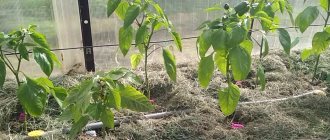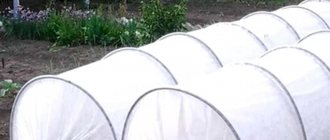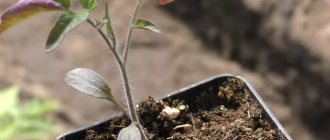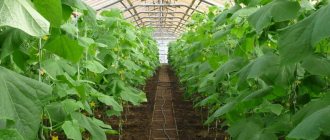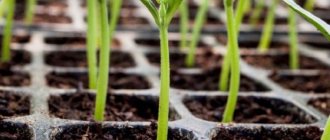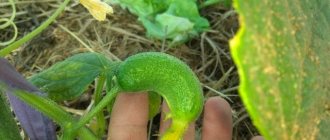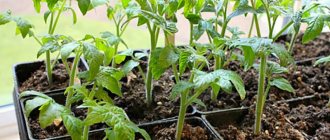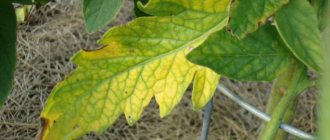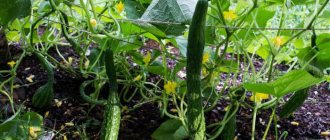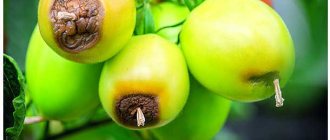Cucumbers have stopped growing because it’s cold - what to do: tips
During spring frosts, some gardeners cover cucumbers with the help of metal arcs and modern textiles.
In cold weather, plant growth is inhibited, the roots do not absorb nutrients well so that the cucumbers grow, experienced vegetable growers advise spraying the bushes after watering, in the morning or evening, in cloudy weather cucumbers completely, with aqueous solutions (10-15 g of product per 1 bucket of water) of “Kemira”, “Kristallion”, “Rastvorin” products. When it's cold, it's better to feed cucumbers through the leaves . You can also spray the bushes with water with a growth stimulant added to it (Epin).
Other fans of growing vegetables in beds, during cold weather, install arcs and cover them with film , but under the film the plants are cold and damp, so it is better to cover them with a special material (agrotex, lutrasil) , which appeared not so long ago. It is also known that plants in the dark tolerate cold better, so experienced plant owners cover the plants with a tarpaulin, rags and straw during frosts.
Also, some vegetable growers recommend making “warm beds” for planting cucumbers in the fall . They are done like this:
- We dig a groove 30 cm deep
- We spread it with a thin layer of tops, potato peelings, grass without seeds, and cover it with earth.
- In the spring we plant cucumbers; they are much warmer in such a bed than in a regular bed.
So, now we know what to do if the cucumbers grow poorly, the leaves turn yellow, and the cucumbers do not set.
Why the ovary on cucumbers does not grow or grows poorly
There are many reasons for poor growth of cucumber ovaries.:
- inappropriate temperature;
- improper watering;
- too close rows of vegetables and incorrect shaping;
- lack of nutrients;
- poor pollination;
- pests and diseases;
- late harvest and early planting;
- high soil acidity.
Unsuitable temperature
Cucumbers almost never grow in uncomfortable conditions . Temperatures below +12…15°C cause serious harm. In cold, damp weather, plants do not absorb nutrients. The ovaries not only stop growing, but also fall off.
Sharp temperature fluctuations and changes in humidity during the day also reduce yields. If the temperature is normal during the day, but at night it drops to +10...12°C, then the green mass will actively grow, but the ovaries and flowers will crumble.
The optimal temperature for cucumbers is +22…26°C . In the greenhouse during the day you will need to provide +20...25°C, and at night - at least +17°C.
Attention! Prolonged heat above +35°C without sufficient soil moisture also has a detrimental effect on the growth of the ovary.
Incorrect watering mode
Cucumbers require high levels of air and soil humidity . This is one of the most moisture-loving garden crops. The roots are rather weakly developed, and the leaves are wide, which contributes to the evaporation of a large amount of moisture.
The maximum moisture requirement is during the period of massive fruit growth. At this stage, cucumbers are watered every 3-4 days, or preferably every other day. Moisture stimulates the growth of the ovary.
Important! The water must certainly be warm, because cold water causes the development of diseases and plant death.
Before flowering, cucumbers are watered by sprinkling, then water is poured under the bush . It is best to do this before 6 pm.
Fit too tight
If plants are planted in excess, they simply do not have enough nutritional area and are not able to produce much fruit. All this inhibits the growth of the ovary, which lacks nutrients. The planting density should be on average at least 20 cm between bushes, as well as 50–60 cm between rows.
It can be useful:
What fertilizers to use during fruiting
Why do cucumber leaves turn yellow and what to do about it?
Why do white spots appear on leaves?
Unformed bushes
The green mass “eats” a lot of nutrients , which in the end are not enough for the ovary. In addition, the thickets do not allow enough light to pass through. The formation of bushes is carried out as follows:
- All stepsons are completely removed from the axils of the lowest first 4-5 leaves.
- The shoots that go higher are shortened after the 2nd leaf.
Deficiency of beneficial microelements
The ovaries do not grow when there is a deficiency of feeding . However, cucumbers do not need nitrogen - its abundance reduces yield.
At the fruit growth stage, it is recommended to feed with fertilizer containing potassium and phosphorus. A deficiency of these microelements leads to poor ovary and pear-shaped fruits. Fertilizing is repeated every 12 days.
Poor pollination
Often gardeners are not even aware of this problem and grow bee-pollinated varieties in greenhouses. The number of female flowers predominates, but without a pollinator they will not bear fruit. In this case, you need to take a male flower and carefully touch it to the female one so that pollen gets on the pistil.
It also happens that cucumbers in the greenhouse begin to grow, but do not grow. Often gardeners pick off barren flowers . You can't do this. These are male flowers, without which female flowers cannot be pollinated. If there are an abundance of barren flowers, stop watering the cucumbers, just sprinkle the soil. Resume watering when the leaves on the vines wilt a little.
Diseases and pests
If there is no ovary on cucumbers, the cause may be pests and diseases :
- Gray rot . The causative agent is a bacterium that develops at low temperatures. It affects all parts of the plant, producing brown areas and a thick gray coating.
- Sclerotinia , or white rot, is considered a dangerous infectious disease. Appears as white flakes with black dots throughout all parts of the plant. Soft mucus spots also appear.
- Melon aphid . Small insects destroy everything: flowers, fruits, ovaries. During the period of activation, leaves fall from the plant, flowers wither, and the yield decreases due to the weakening of the mother plant.
- Spider mites live on the underside of leaves and feed on greens. This red-green small insect is extremely dangerous for cucumbers. It completely damages the plant, entwines the leaves with small cobwebs, and is capable of destroying entire rows.
Violation of planting and harvesting deadlines
Since cucumber loves warmth, it is planted in the beds when the temperature reaches +10–12°C . It is recommended to treat the soil with a solution of potassium permanganate to reduce the risk of disease development. The seedlings will be ready for planting at 25-30 days of age and with 5-6 true leaves.
Rare and untimely harvesting of fruits can also delay the growth of young ovaries and reduce yields. Pick ripe cucumbers on time, then the plant will have the strength to give the young ovaries enough nutrients. At the very beginning of fruiting, harvesting is carried out once every 2-3 days, and then every day or every other day.
Bad soil
With improper fertilizing, the acidity level of the soil increases. Cucumbers do not grow in such an environment, because the acid does not allow the necessary substances to be absorbed. At the same time, the entire plant lags behind in development.
Other reasons
If the cucumbers set, but do not grow , then the cause may be a lack of sun. To obtain a good harvest, seedlings need UV rays. The lack of light in many cucumber varieties causes growth retardation: the stems stretch, but there is no strength left for setting and developing fruits.
Incorrect feeding
Very often, a lot of nitrogen fertilizers are applied to cucumbers, which enhance the growth of green mass without setting fruit. In addition to nitrogen, cucumbers need potassium and phosphorus fertilizers.
As soon as flowering occurs, nitrogen can be excluded from fertilizing. During the entire growing season, four feedings must be made:
- before sowing, it is good to add organic (compost, manure) and mineral fertilizers to the soil;
- after the emergence of seedlings in the phase of 2 true leaves, they are fed with nitrophosphate (nitrogen, potassium, phosphorus). Dilute 1 tablespoon of fertilizer in a liter of warm water;
- After flowering, potassium and phosphorus fertilizers are applied twice.
Cucumbers love to be watered with a milk solution. This fertilizing enriches the soil with potassium.
In order to prevent an abundance of barren flowers and not to wonder why there are no ovaries of cucumbers sown in open ground, it is necessary to protect plants from sudden temperature changes, prevent the development of diseases and take preventive measures, which are based on all the reasons stated above that affect the yield of cucumbers.
Preventive spraying of cucumbers
Spraying for the prevention of cucumber seedlings and adult bushes allows you to prevent or destroy at an early stage many dangerous diseases, including those of fungal origin. At the same time, you need to try not to over-moisten the soil and not provoke burns of the leaves, choosing for processing earlier in the morning or late evening.
You may be interested in:
Pollinating cucumbers on the windowsill: methods Unscrupulousness of farmers growing vegetables, expressed in the generous dosing of plants with chemicals, as well as...Read more...
If cucumbers do not grow on the windowsill, it is recommended to spray with fermented milk whey, diluting it with water in a ratio of 1:5. Bordeaux mixture, solutions of potassium permanganate, wood ash, copper sulfate, and laundry soap are also used.
Bad Seeds
A common reason why cucumbers do not bloom. Unfortunately, such seeds can be bought in any store; no novice gardener is immune from this. Such seeds are produced by hybrid varieties or those cucumbers that are pollinated by a hybrid. There are a lot of such seeds because it is difficult to control proper pollination in ordinary areas. Therefore, it is recommended to buy proven seeds.
Diseases and pests
| Powdery mildew Signs:
How to treat:
| |
| Spider mite Signs:
How to treat:
| |
| Root rot Signs:
How to treat:
|
How to decorate a cucumber bush
Improper design of a cucumber bush entails either a lack of flowering or an abundance of empty flowers, and all because the bush is forced to feed a lot of ballast, unnecessary shoots.
- You need to count 4-5 leaves from the soil and clean out the axils in them (the space between the stem and the leaf). In this case, a pair of seven-lobed leaves is not taken into account. Even if you see flower buds or a small ovary in the axils, they should be broken off.
- You need to pinch off the top when the cucumber vine has grown to the height you want, otherwise new flowers will stop forming or you will encounter a problem with empty flowers.
- The fight against barren flowers involves cleaning off excess leaves. The fact is that another additional leaf often emerges in the axil next to the flower; it must be pinched immediately before it develops, otherwise this shoot will take on the nutrients and the flower will die.
- If the cucumber spreads along the ground, then you can safely pinch off all the discarded mustache - this is extra ballast. On vertical trellises, about half of the mustache is pinched, although some gardeners claim that with a good garter, you need to cut everything in.
If you don’t pinch off the extra shoots in time, flowering may stop.
Wrong variety selected
Experts divide cucumber varieties into two groups.
- Autonomous varieties (parthenocarpic), which do not require pollination by insects and are suitable for planting in greenhouses, under film and on apartment window sills.
- Traditional (bee-pollinated) flowers that produce male and female flowers. These varieties are pollinated by insects and are suitable for planting in open ground. When sowing traditional varieties in a greenhouse, flowering may not occur. In order for such varieties to bloom and spring up, it is necessary to provide access for insects to the greenhouse. Only autonomous (hybrid) varieties are sown on a balcony or windowsill, which also bloom in open ground.
The necessary conditions
Almost all varieties of the plant begin to bloom approximately 30-45 days after sowing the seeds. For cucumbers to bloom, it is necessary to maintain an optimal temperature of 18 to 21 degrees.
When frost occurs, which often happens in early spring in northern regions, the plant may slow down or stop its growth altogether. Therefore, you should carefully monitor the maintenance of temperature conditions. It is also necessary to maintain a water and nutritional balance, fertilize the plant, and correct planting.
Choosing the right landing site
To get a rich harvest of cucumbers, you need to choose the right place for planting. Cucumbers should be grown in a bright area, protected from strong winds. It’s good if they grow around: corn, potatoes or sunflowers
In general, tall plants that will protect cucumbers. According to the rules of crop rotation, cucumbers can be planted where tomatoes, cabbage, or peas used to grow. On the contrary, you should not plant this vegetable in places where zucchini and squash grew.
Extreme measures
Let's assume you did everything right. We prepared and fertilized the soil well in advance, grew excellent seedlings and treated them with all the necessary microelements, but there were no flowers in sight.
In this case, there is one more radical method that allows you to wake up the plant and stimulate flowering; it consists of two parallel stages:
- It is necessary to carry out 2-3 drying cycles . To do this, you water the bushes and wait until the leaves sag from lack of moisture, then water again and wait for them to sag - this cycle is called drying.
- At the same time as drying, harden the cucumbers . Here you just need to open all the doors and hatches of the greenhouse at night or remove the film from the greenhouse.
During drying, you should not be too zealous; slight wilting of the foliage is enough.
Often, such radical measures cause severe stress in cucumbers, after which the plants mobilize all their strength to survive and begin to actively bloom and bear fruit.
Reviews from gardeners
Eugene
You need to either dry them until the leaves slightly wilt, or lightly “steam” them - water them at the hottest time of the day and cover them (not for long, again, just so that the leaves are drooped and not cooked.) This “stimulates fruit formation.”
Source: dacha.wcb.ru
Eugene
They sit with you because of the cold nights. For a cucumber, +10 is STOP for a day, regardless of the heat during the day. Now it's warm, so will the cucumbers. If they only have two leaves, it’s too early to pinch. Wait a week and add some ash (it can be diluted in a bucket and poured over it).
Source: dacha.wcb.ru
